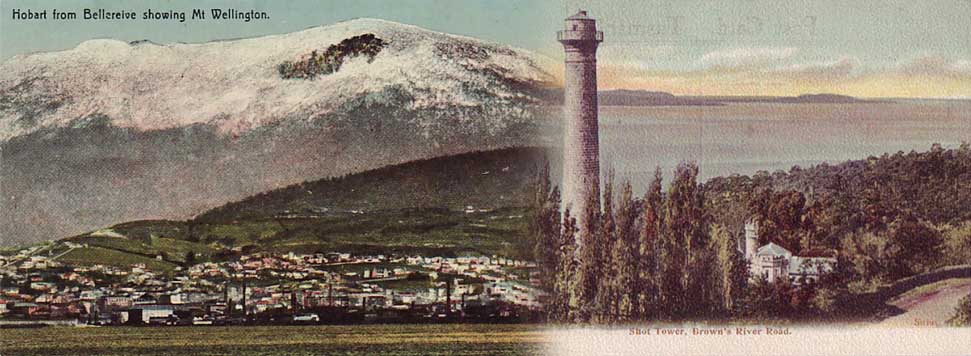This website presents the history of Tasmanian postcards, by cataloguing the author's collection and by drawing on cards from other sources.
Cards are organised by publisher, and within publisher by series. A publisher produced one or many series of cards, sometimes naming each series, and sometimes making natural series by card style or subject. Some publishers numbered their cards in some manner or other, while others left the historian guessing. Some publishers clearly identified themselves as such by printing their name on their cards, while others remained anonymous, leaving the cataloguer to seach for clues in similarity of style, place or time.
The cards are documented when information is available using the following structure:
Design: The who, when, why and how of the card design. This includes the people that assembled the components to form the front image and the back postal form. Generally, we know very little about who the designers were. One of the most important people here is the photographer, who captured the image with which the designer worked.
Manufacturer: The who, when, why and how of the physical card manufacture. This includes the printer and the printing process and materials and equipment used. The two main methods of manufacture have been mechanical printing or photographic printing, with some hand colouring on older cards. The publisher is a person or organisation that sometimes occupied the role of designer or manufacturer, either personally or by engaging others.
Usage: This describes who used the card, when, why and how. In the case of postcards there were two main methods of use: as a posted message, or as a collected item. In the case of a posted message, the message content opens up the whole field of study of the recorded word.
Owned and exchanged: This is the who, when, why and how of ownership that documents the series of owners of the cards, and how and why they transferred ownership. This included everyone from the first retailer to the collector a hundred years later.
Cultural history: The card, its image and its written message is a statement of its significance in the culture at the time. The physical properties of the card itself show what was modern and worth communicating; the choice of image shows what was relevent, important, or socially desirable or useful. The written message on the back, trivial or substantial, illuminates the lives of people, and the world in which they lived.
Within each of these broad categories, it is People, Place and Events that are named as participants. They fill out and make concrete the who, why, where and when of the documentation.
